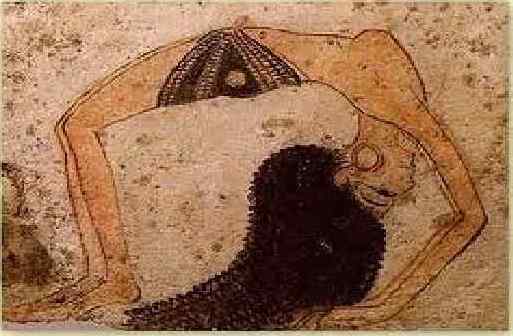Among the great variety of circus arts, there is hardly an older genre than the one that is still called “rubber” behind the scenes. The earliest information about it dates back to a very, very distant time.
The mysterious and mesmerizing genres of plastic acrobatics – contortion and hand-balancing – have existed since ancient times.
It seems impossible how the performers, curled up in rings, fold in half, while smiling charmingly, send air kisses to the audience. Women are snakes, goofy boys, children without bones – people have come up with many names for this phenomenon.
Interestingly, rubber is the oldest form of acrobatics! It emerged as a term in the early twentieth century and is associated with the introduction of rubber products into everyday life; the poster name “rubber” replaced the former names “Gutta-percha boy”, and “Rubber Woman”! What are contortion and hand-balancing? If you want to learn, join Capital Circus and acquire new skills and become stronger in these disciplines.
Handbalancing is based on balancing in a handstand (two and one), performed in different positions and on a variety of supports, including rotating ones. Hence the name – hand-balancing is adopted in professional circles. Much later, this kind of equilibrium has more often been performed on the head, but the former name – handstand – has survived to this day.
“Rubber” as a circus term is found in special literature only at the very end of the last century. We must think that its emergence is connected with the blossom of the automobile and aviation industry, which demanded a huge amount of rubber for tires. The thick, viscous sap of the rubber plant became the most profitable of the colonial commodities. The word “rubber” became fashionable. It was probably at that time that it occurred to someone to put “rubber lady” on the poster instead of the familiar “lady without bones”.
HERE IN CANADA, WE HAVE OUR OWN WAY.
The amphorae of Ancient Rome have brought down to us colorful pictures of flexible acrobats, here the skillful artist, standing on her hands and abruptly curving back, began to move carefully along the board, and not just move, not a step, but “front bridges”, or, as they say in professional circles, “stand with Bogen”, while trying not to touch a dangerous obstacle – swords.
If for the acrobats of Rome it was traditional to demonstrate flexibility over the sword tips and for the ancient Greeks – on the shield, which was held by the athlete, the Chinese artists introduced the original, dispersed all over the world manner of plastic acrobatics thousands of years ago. Standing on the bench painted with the national ornament, the acrobat was smoothly deflecting the body backward, sinking lower and lower, and now his head and shoulders passed behind the feet. But this was only the beginning, the main thing was that the acrobat had to bend in such a way as to lift a scarlet poppy flower from the carpet without the help of hands-mouth. This ascent, a slow, tense ascent, in which expressively intertwined out of the range elasticity of the body with easily guessed strength of the legs, still looks with fascinating interest.
Somewhat different, but also in their national and indigenous manner, were the numbers of Uzbek artists, the flexible teenagers “muallakchi”. With a copper basin filled with water, “muallakchi” went around the spectators, who threw coins into the basin, as had been customary since time immemorial. Although everyone knew well what would happen next, this did not affect the attention with which hundreds of eyes watched all the preparations, how “muallakchi” (most often they performed two or three together with their teacher), having put the basin on the ground, began to make “bridges”, “wheels”, “rolls from elbow to foot”. But that was just the “warm-up”. Then, the main thing began – the most prepared of “muallakchi”, standing with his back to the basin and trying on it, again and again, lowered himself to the “bridge”, dipped his face into the water, and managed to get coins from the bottom with the eyelids of his eyes.
Flexibility training for contortion act as well as handstand classes in Capital circus school, Kanata, ON.
The flexibility training of Nello, the hero of the famous novel The Zemgano Brothers, began at the age of four and a half, “before the bones lost their infantile flexibility. Here is how, with true knowledge, Goncourt describes these exercises: “… Jani (Nello’s older brother), affectionately placing his hand on his stomach and standing against him, quietly and quietly helped him to roll back his body and head and was ready to pick him up with his hands as soon as he began to fall, and when Nello had gained sufficient flexibility and tipping backward, he was placed two feet from the wall, and he had to roll over every morning, leaning against the wall with both hands, and sink lower and lower every day, until, having doubled his bend, he could reach his heels with his hands.
This description exhaustively shows the beginning, so to speak, of “the ABCs of flexibility. Month after month, centimeter after centimeter, the distance between my legs and my back becomes smaller and smaller. And now my shoulder blades have touched my shins, so that, as the acrobats say, “there is no gap between them”.
A lot, a lot of work, will, and persistence without indulgence will be required for this “full wrinkle. Only after that can the artist begin to create plastic short stories, eloquently speaking about how enchantingly beautiful the flexible human body can become.
If you are not stopped by your fears, and you always strive to develop – the latest news about the contortion and hand balancing classes in Ottawa and vicinity Kanata, Stittsville, and Nepean on our circus school website.
